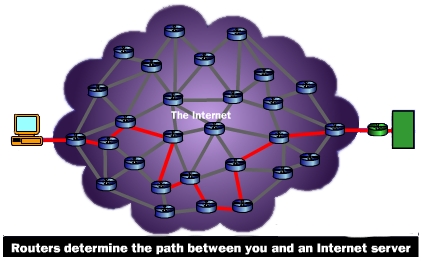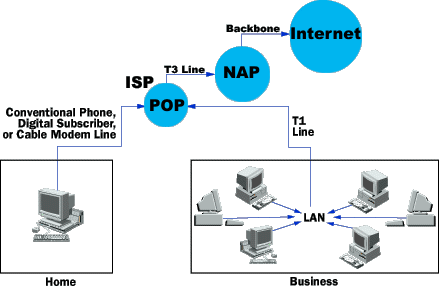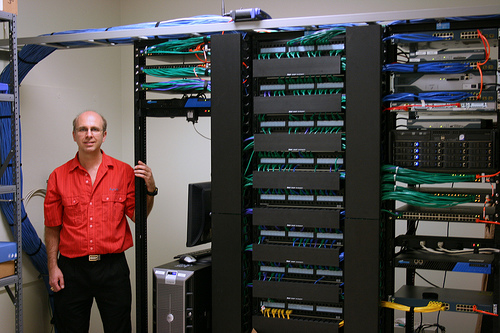The Internet – A Series of Tubes by Andrew Blum
Mr. Brumwell: “Where is the Open Source Classroom?”
Kid #1: “at mrbrumwel.com.”
Mr. Brumwell: “Correct. Where is mrbrumwell.com?”
Kid #3: “on the internet”
Mr. Brumwell: “Correct. Can I go to where the website is? be in the same room as it?”
Kid #4: “What?”
Kid #5: “No, it’s on the internet”
Mr. Brumwell: “Where’s the internet?”
Kid #2: “My brain hurts . . . ”
All computers on the internet can bring in data and then send it back out just like the water intake and output systems in our homes.
The internet is actually a bunch of computers connected together so they can share information.

The internet is like a public water system in that very few people have a direct link to the source. Instead, water goes through a series of filters, systems and pipes to reach us.
Very few people have a direct line into the “backbone” of the internet as well. Instead, most people access the internet through a series of connected computers and networks with increasing capacity for transferring information.
The backbone of the internet can be thought of as the biggest pipes for information to travel through. These lines are fiber optic trunk lines. They can transfer up to 2,488 Mbps (million bits per second). The next step down in speed are t3 (45 Mbps) and t1 (1.544 Mbps) lines.
We tap into the t1 or t3 lines through our ISP’s (internet service providers) via cable, DSL, wi-fi or regular telephone lines.

Computers communicate digitally or in numbers. Therefore, way back in the beginning of the internet, it was decided that in order to network computers, each device had to have it’s own number. This number is called the IP address. IP addresses are a series of 4 sections of numbers separated by a decimal point. Find your IP Address by visiting this site.
To help people find and use IP Addresses better, the domain name system was invented to map IP Addresses to URL’s. This way, instead of having to remember a series of numbers, we only need to remember mrbrumwell.com.
Where Do Web Pages Live?
The web is a series of computers connected through computer networks, but all those computers aren’t the same. Some are clients and some are servers. What do you think is the difference?

A server is a special kind of computer used to host web pages. It contains a motherboard, RAM, a CPU (processor) and a hard drive. The hardware in a server tends to be higher quality than a standard desktop because many people may rely on a servers performance. When a client (you or me) calls for the web page (by hitting a link), the server serves it up and we see the results in our browser.
The original website is saved to the server. We simply get a temporary version of it delivered to our computer and saved in our “cache”. We can alter this version of a page using Google Chrome’s element inspector, but we can’t alter the version saved on the server.
Servers also run with a different type of operating system. Windows 2000 Server, Red Hat Linux and Netware 6.5 are three popular server operating systems.
Web pages are built and then placed on the server with a special program called an ftp (file transfer protocol) program like filezilla.
reference: How Stuff Works: Internet Infrastructure





